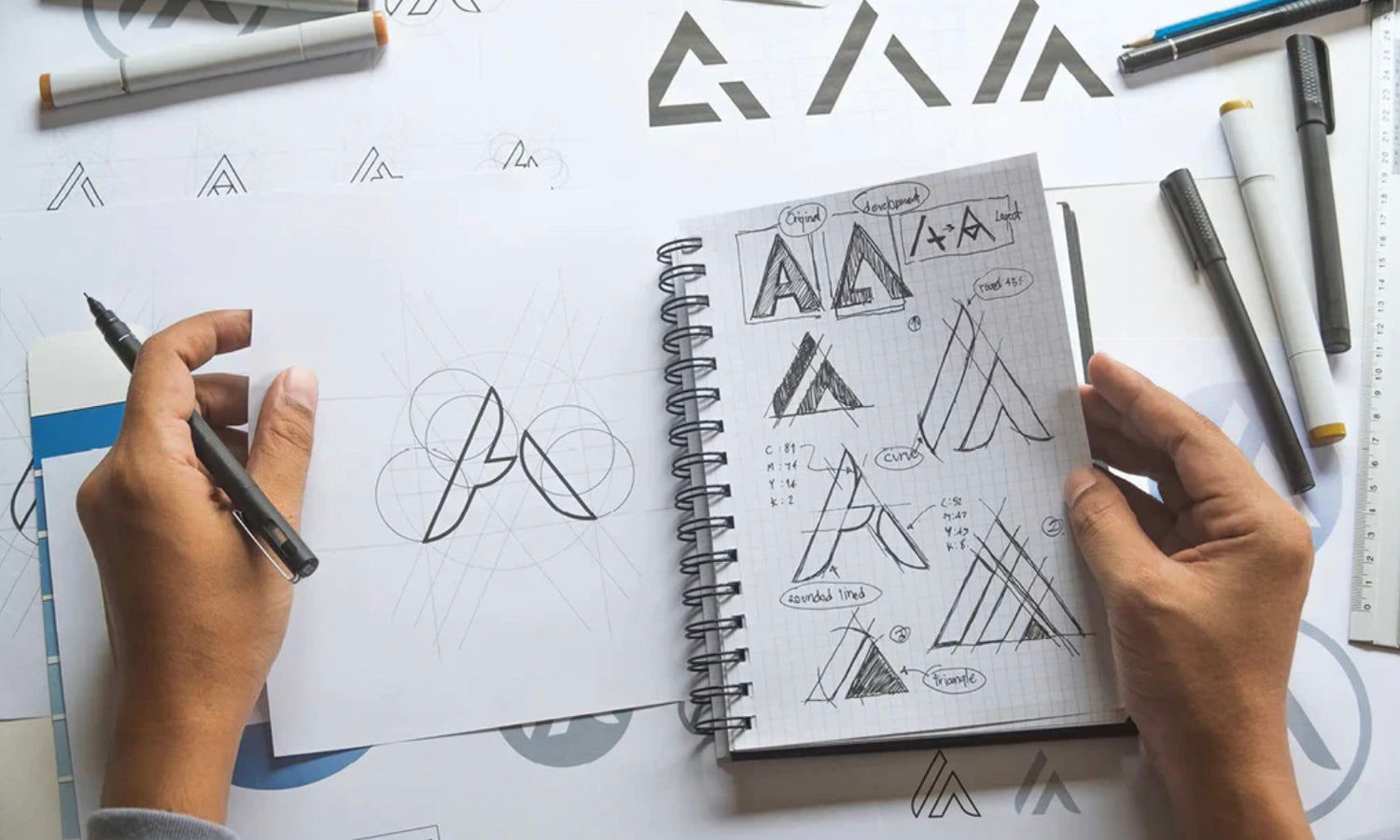30 Most Inspiring Logo Designer Quotes You Should Check

In the world of branding, few things are as powerful as the insights of experienced creatives. For a logo designer, inspiration often comes not only from visual work but also from the words of industry leaders who have shaped the design landscape. Quotes can encapsulate complex principles in just a few words, providing motivation, perspective, and direction during the design process. They remind us of the importance of simplicity, clarity, originality, and the deeper strategy behind every mark we create.
Whether you are new to the industry or a seasoned logo designer looking to refresh your mindset, well-chosen quotes can act as guiding lights. They can refocus your thoughts when a project feels creatively stagnant or reinforce your decisions when presenting concepts to clients. From timeless remarks by legends like Paul Rand and Saul Bass to modern reflections by design icons, these quotes capture the true essence of what it means to build visual identity with intention.
This collection of logo designer quotes is meant to inspire, challenge, and elevate your thinking as you shape identities that last. Keep these words close—they’re short, powerful, and timeless tools that connect the craft of design to its greater purpose.
Design Is Thinking Made Visual
This quote by Saul Bass, one of the most iconic figures in graphic design, perfectly captures the essence of what it means to be a logo designer. “Design Is Thinking Made Visual” is not just a poetic phrase—it’s a reminder that design is more than just aesthetics. It is a process of translating strategy, emotion, and purpose into visual form. For logo designers, this quote emphasizes that a successful logo doesn’t begin with drawing—it starts with thought.
Before a logo takes shape, there’s research, discovery, and intention behind it. A great logo designer asks the right questions: What does this brand stand for? Who is the audience? What makes this identity unique? The answers form the foundation of the visual output.
Bass’s quote also validates the intellectual rigor behind design work. A logo that communicates a message clearly and effectively is the result of critical thinking—not random creativity. It’s about distilling complex brand values into a single, memorable image.
A Logo Doesn’t Sell (Directly), It Identifies
Paul Rand’s famous quote, “A Logo Doesn’t Sell (Directly), It Identifies,” is a crucial truth for every logo designer to understand. It shifts the perspective away from a logo as a sales tool and toward its true role: recognition. While many clients expect a logo to carry the weight of a company’s marketing power, Rand reminds us that a logo’s primary job is to establish identity, not to persuade.
This quote highlights the foundational principle that a logo is not the brand—it is a symbol of it. A well-designed logo becomes a visual shortcut that connects audiences to the brand’s values, voice, and presence over time. Think of how the Nike swoosh or Apple logo doesn’t describe the product or service but instantly signifies everything the company represents.
For a logo designer, Rand’s quote helps clarify the boundaries of responsibility. While a logo must be visually strong, relevant, and unique, it works in tandem with a broader branding ecosystem—messaging, experience, and delivery—to build loyalty and drive sales.
Simplicity Is the Ultimate Sophistication
Leonardo da Vinci’s quote, “Simplicity Is the Ultimate Sophistication,” is a timeless message that continues to resonate in the modern world of branding. For a logo designer, this quote speaks directly to the art of restraint. It reminds us that the strongest logos often emerge not from complexity, but from clarity and reduction.
A simple logo isn’t plain or lacking in creativity—it’s the result of a refined design process that strips away the unnecessary to reveal only the most essential elements. Think of logos like Nike’s swoosh or McDonald’s golden arches. Their strength lies in their simplicity, making them easy to recognize, remember, and reproduce across countless mediums.
Simplicity also enhances versatility. A logo must work in different sizes, from mobile screens to billboards, and in various formats like digital, print, and embroidery. Intricate details often get lost or distorted, making a minimal approach more practical and impactful.
Make It Simple, But Significant
“Make It Simple, But Significant,” a quote famously delivered by Don Draper in Mad Men, perfectly sums up the balance every logo designer must strike. It’s not enough for a logo to be clean—it must carry meaning. Simplicity without substance can feel generic, while significance without clarity can be overwhelming. The sweet spot lies in thoughtful reduction.
For a logo designer, this quote serves as a call to create with purpose. Each element—line, shape, color, and type—should be intentional. If it doesn’t contribute to the identity or story, it doesn’t belong. The result is a logo that’s easy to grasp at a glance yet rich with meaning for those who look deeper.
Take the FedEx logo, for instance. At first glance, it’s a simple wordmark. But within the negative space between the “E” and “x,” there’s an arrow—subtle yet powerful. That’s simplicity with significance.
Quotes like Draper’s are especially valuable during the revision process, reminding logo designers to defend against unnecessary complexity while still delivering emotional or conceptual depth. Simplicity makes the logo functional; significance makes it memorable.
Design Is the Silent Ambassador of Your Brand
Paul Rand’s quote, “Design Is the Silent Ambassador of Your Brand,” powerfully illustrates the unseen yet influential role of visual identity. For any logo designer, this statement reinforces the idea that design speaks volumes without uttering a word. Every color choice, shape, and typeface decision contributes to how a brand is perceived—before a single sentence is read or a product is used.
A logo, as part of that visual language, becomes the frontline representative of the brand. It appears on packaging, social media, business cards, advertisements, and more. In these moments, it acts as a consistent symbol that reinforces brand recognition and trust. The logo doesn’t explain—it expresses.
Quotes like Rand’s help logo designers and clients understand that effective design isn't just about looking good. It’s about conveying tone, values, and promise with clarity and subtlety. A playful logo hints at approachability. A geometric, modern mark might suggest innovation.
Logos Are the Graphic Extension of the Internal Realities of a Company
Saul Bass once said, “Logos Are the Graphic Extension of the Internal Realities of a Company.” This quote serves as a profound reminder for every logo designer: design isn’t just decoration—it’s expression. A logo should mirror the company’s personality, values, and core purpose. It’s a visual gateway into the soul of the brand.
For example, a startup focused on sustainability should not have a logo that feels artificial or overly slick. Instead, the visual identity should feel organic, balanced, and conscious—reflecting the brand’s internal truth. The goal is to translate ethos into iconography.
Quotes like Bass’s stress the importance of research and discovery in the design process. Before opening a sketchbook or launching design software, a logo designer should seek to understand the business from the inside out. What makes the company different? What emotions should the logo evoke? What message should it reinforce?
This quote encourages logo designers to align visuals with values. It’s not just about form—it’s about relevance. A well-crafted logo becomes a badge of authenticity, speaking honestly about who the company is and what it stands for.
Good Design Is Obvious. Great Design Is Transparent.
Joe Sparano’s quote, “Good Design Is Obvious. Great Design Is Transparent,” offers essential insight for every logo designer seeking to refine their craft. At first glance, the quote might suggest that good design should be easy to recognize—but it goes deeper. Great design, as Sparano suggests, operates seamlessly, often without the viewer even noticing the intention behind it.
For logo designers, this idea translates into creating visuals that feel so intuitive and aligned with the brand that they seem to “belong” naturally. A transparent logo design doesn’t demand attention; it earns recognition by quietly reinforcing identity, values, and clarity. It enhances communication without distracting from the message.
Quotes like this one are particularly relevant when evaluating whether a logo is overdesigned. If viewers are too focused on understanding the design instead of the brand, the visual has failed in its mission. A great logo blends in—yet remains unmistakable.
Color Does Not Add a Pleasant Quality to Design—It Reinforces It
Pierre Bonnard’s quote, “Color Does Not Add a Pleasant Quality to Design—It Reinforces It,” underscores the strategic role of color in visual communication. For a logo designer, this idea goes beyond aesthetics and into purpose. Color isn’t simply there to make something pretty—it exists to support the concept, evoke emotion, and strengthen brand messaging.
In the context of logo design, color selection should never be an afterthought. It must align with the brand’s personality, audience, and tone. For instance, a tech company may lean toward blues and grays to convey trust and innovation, while a health food brand might adopt earthy greens to emphasize natural values. Each color becomes a tool of reinforcement.
Quotes like Bonnard’s push logo designers to use color with intent. When applied thoughtfully, color enhances readability, differentiation, and recall. It also works in harmony with typography, layout, and shape to create a balanced and cohesive identity.
If No One Hates It, No One Really Loves It
Jessica Walsh’s bold quote, “If No One Hates It, No One Really Loves It,” delivers a powerful message to every logo designer navigating the line between safe and memorable design. In a world filled with visuals competing for attention, playing it safe often leads to work that is quickly forgotten. Walsh reminds us that strong reactions—positive or negative—are often signs that a design has presence and personality.
For a logo designer, this quote encourages embracing boldness. Great logos don’t try to please everyone. Instead, they stand for something specific. They reflect the uniqueness of the brand, and in doing so, they might challenge expectations or deviate from conventional aesthetics. That’s what makes them memorable.
Quotes like this help logo designers and clients alike reframe creative risk. Being slightly polarizing can work to a brand’s advantage—it fuels conversation, emotional engagement, and identity strength. Think of logos like the MTV mark or the redesign of Airbnb’s symbol. Both stirred controversy, yet their distinctiveness has become central to their brand success.
The Details Are Not the Details. They Make the Design
Charles Eames’ quote, “The Details Are Not the Details. They Make the Design,” is a masterclass in precision for every logo designer. At first glance, small design choices—like kerning, stroke thickness, or whitespace—might seem insignificant. But Eames insists they are the foundation of quality. In logo design, every micro-decision contributes to the success or failure of the overall identity.
This quote reminds logo designers that excellence lies in the execution. A concept may be strong, but if the craft is lacking, the message gets diluted. Whether it’s how the negative space interacts with a shape or how a curve aligns with a type baseline, these tiny adjustments transform good logos into great ones.
Quotes like Eames’ push us to slow down and refine. Even if clients or viewers don’t consciously notice these details, they sense them. A well-balanced logo feels intentional and trustworthy—because it is. These subtle decisions are what separate professional-level work from amateur efforts.
Whitespace Is Like Air: It Is Necessary for Design to Breathe
Wojciech Zieliński’s quote, “Whitespace Is Like Air: It Is Necessary for Design to Breathe,” offers a vital principle every logo designer should embrace. In visual communication, whitespace—also known as negative space—is not empty or wasted. It’s a powerful design tool that enhances clarity, focus, and impact.
For logo designers, whitespace serves multiple functions. It provides balance between elements, prevents visual clutter, and draws attention to what truly matters. Whether it’s the spacing between letters in a wordmark or the clean margin around a symbol, whitespace guides the viewer’s eye and creates a sense of harmony.
Quotes like Zieliński’s help reinforce the importance of restraint. Many young designers fall into the trap of filling every inch of space. But great logos often succeed because of what they choose not to include. The FedEx arrow, the WWF panda, or Apple’s minimal icon all rely on intelligent use of negative space to convey meaning and strength.
A Logo Is Not Communication. It’s Identification
Sagi Haviv’s quote, “A Logo Is Not Communication. It’s Identification,” is a crucial distinction for every logo designer to understand. Many assume a logo should tell a full story or explain what a company does. Haviv counters this by reminding us that a logo’s core function is not to explain, but to identify.
A successful logo distills the essence of a brand into a simple, memorable mark. It doesn’t need to illustrate every service or product. Instead, it must be instantly recognizable and consistently associated with the brand it represents. That’s where its power lies—in identification over explanation.
Quotes like Haviv’s are especially helpful in client conversations. It’s common for clients to want their logo to include too many elements: an icon, tagline, detailed imagery, and meaning packed into one mark. This usually leads to clutter and confusion. Haviv’s wisdom encourages logo designers to strip down to what’s essential.
Design Without Strategy Is Just Decoration
Hilary Young’s quote, “Design Without Strategy Is Just Decoration,” delivers a critical truth every logo designer should internalize. It draws a clear line between design that looks good and design that works effectively. Without a strategic foundation—understanding the brand, the audience, and the business goals—a logo becomes nothing more than visual flair.
For a logo designer, this quote is a reminder that the design process begins long before the first sketch. Research, brand discovery, competitive analysis, and client collaboration are essential steps in crafting a visual identity that not only looks appealing but functions as a brand asset.
Strategic design is purposeful. Every choice—from color and shape to typography and layout—should align with the brand’s identity and message. When strategy drives design, the result is a logo that resonates with the target audience, builds recognition, and supports long-term growth.
Quotes like Young’s help designers maintain focus and communicate the value of thoughtful design to clients. A decorative logo may win short-term admiration, but a strategic logo earns lasting relevance and trust.
The Role of the Designer Is That of a Very Good, Thoughtful Host
Charles Eames’ quote, “The Role of the Designer Is That of a Very Good, Thoughtful Host,” reframes the responsibilities of a logo designer in a refreshingly human way. Rather than being the center of attention, the designer takes on a supportive role—anticipating needs, creating comfort, and guiding users with clarity and care.
In logo design, this means understanding the client’s brand, audience expectations, and the various environments in which the logo will appear. A logo must serve the brand, not overshadow it. It should be accessible, scalable, and versatile—always working in harmony with other brand elements to create a seamless experience.
Quotes like Eames’ are helpful reminders that design is not self-serving. A thoughtful logo designer considers not only how the design looks, but how it feels and functions across touchpoints. Every decision, from icon shape to type selection, is made with intention, always placing the needs of the brand and audience first.
Logos Should Be Timeless, Not Trendy
David Airey’s quote, “Logos Should Be Timeless, Not Trendy,” serves as a golden rule for every professional logo designer. While it can be tempting to follow current visual fads—like gradient overload, ultra-minimalism, or hyper-geometric styles—Airey reminds us that trends come and go. A great logo, on the other hand, stands the test of time.
For a logo designer, the goal is to create a mark that maintains its effectiveness and relevance even a decade from now. Timeless design avoids excessive embellishment and focuses on clarity, legibility, and symbolic strength. This approach results in logos that still function across changing media landscapes and design tastes.
Quotes like Airey’s help redirect attention from momentary style to enduring strategy. Consider logos like IBM, Coca-Cola, or Mercedes-Benz. These marks have evolved slightly over the years but have maintained their core identity—because they were designed with longevity in mind.
When logos rely too heavily on fleeting visual styles, they age quickly and require frequent redesigns, which can harm brand consistency. For clients and designers alike, timeless design is not just an aesthetic preference—it’s an investment in brand stability and recognition.
Design Is Intelligence Made Visible
Alina Wheeler’s quote, “Design Is Intelligence Made Visible,” beautifully captures the intellectual depth behind every effective logo. It challenges the misconception that design is merely about making things look good. Instead, it emphasizes that design—especially logo design—is the visible output of thoughtful problem-solving, brand strategy, and user understanding.
For a logo designer, this quote reinforces the importance of research and conceptual clarity. A logo isn’t just a drawing—it’s the result of dissecting a brand’s mission, understanding its audience, and translating that into a recognizable symbol. Every curve, font, and color choice should be intentional, driven by purpose and backed by reasoning.
Quotes like Wheeler’s also help elevate the perception of what logo designers do. We’re not just artists—we’re visual strategists who use form and symbolism to communicate complex identities in a single glance. A strong logo must be adaptable, memorable, and distinctive—and achieving that requires both creativity and critical thinking.
This quote encourages logo designers to approach every project with curiosity and logic. A beautiful logo that lacks strategic intelligence may fall flat, while one grounded in clear thinking will resonate deeply with its audience.
Good Logos Are Not Designed, They Are Discovered
Alan Fletcher’s quote, “Good Logos Are Not Designed, They Are Discovered,” offers a profound shift in how a logo designer should approach the creative process. Rather than forcing visuals into existence, Fletcher suggests that the best logos are the result of deep understanding, exploration, and uncovering the essence of a brand.
This perspective encourages logo designers to dig beneath the surface. Great logo ideas are rarely born in the first draft—they emerge through research, sketching, trial, and refinement. Discovery happens when designers listen carefully to the brand’s values, audience, and vision, and then translate those insights into a symbol that feels inevitable.
Quotes like Fletcher’s reinforce the idea that a logo isn’t just made—it’s revealed. The process is less about decoration and more about distillation. When a logo clicks, it feels natural, as if it always existed—it simply needed to be found.
Creativity Is Allowing Yourself to Make Mistakes. Design Is Knowing Which Ones to Keep
Scott Adams’ quote, “Creativity Is Allowing Yourself to Make Mistakes. Design Is Knowing Which Ones to Keep,” delivers an honest and practical message for any logo designer. It highlights the essential difference between unfiltered creativity and the refined discipline of design. In the early stages of concepting, mistakes are not only expected—they’re welcomed. They can lead to fresh thinking, unexpected forms, and unique directions.
This quote gives logo designers permission to explore fearlessly. The first dozen sketches might be chaotic, off-brand, or too literal—but buried within them could be the spark of something exceptional. Mistakes aren’t failures; they are clues. The design process is about uncovering which of those "mistakes" actually communicate something powerful and true.
Quotes like Adams’ offer valuable reassurance, especially during creative blocks. They remind designers that messiness is part of the method. However, refining those raw ideas into something purposeful is where design skills come into play. It’s not about keeping everything—it’s about identifying what works and shaping it with intention.
Every Great Design Begins With an Even Better Story
Lorinda Mamo’s quote, “Every Great Design Begins With an Even Better Story,” highlights a truth that every logo designer should hold close. Before shapes, colors, or typography come into play, there must be a story—a foundation that defines the why behind the visual identity. Without it, design lacks direction and purpose.
A compelling logo doesn’t appear in a vacuum. It’s rooted in the brand’s journey, values, vision, and personality. Whether it’s a startup built on innovation or a heritage brand steeped in tradition, every meaningful logo draws from a story that resonates. That narrative is what fuels creative choices, connects emotionally with audiences, and guides consistency across all brand touchpoints.
Quotes like Mamo’s remind logo designers to begin projects with curiosity. Asking the right questions—Why does this brand exist? What makes it different? What impact does it hope to make?—leads to designs that feel authentic and memorable.
Great Branding Doesn’t Just Happen. It’s the Result of Smart Strategy and Precise Execution
Debbie Millman’s quote, “Great Branding Doesn’t Just Happen. It’s the Result of Smart Strategy and Precise Execution,” delivers a reality check for any logo designer looking to build meaningful work. Branding is not a matter of chance—it’s the product of careful thought, deep understanding, and technical excellence.
For a logo designer, this quote underscores the dual responsibility of insight and craftsmanship. Strategy begins with research: defining audience personas, understanding brand positioning, and uncovering competitive advantages. Execution, on the other hand, is about translating those insights into clear, impactful design.
Quotes like Millman’s reinforce that great logos are not just artistic—they’re strategic. Every element of a logo, from the geometry of the mark to the curve of the type, must support the overall brand narrative. This requires intentionality, focus, and alignment across all branding decisions.
Logo designers must go beyond aesthetic instincts and adopt the mindset of a brand builder. Precision matters—whether it’s spacing, proportions, or visual hierarchy. Even the smallest inconsistencies can disrupt brand perception over time.
Design Is Where Science and Art Break Even
Robin Mathew’s quote, “Design Is Where Science and Art Break Even,” perfectly captures the dual nature of what it means to be a logo designer. On one hand, there’s art—creativity, intuition, aesthetics, and emotion. On the other, there’s science—strategy, geometry, psychology, and function. Great design lives at the intersection of both.
For a logo designer, this quote emphasizes that creativity alone isn’t enough. A logo must be structurally sound, scalable, and aligned with brand strategy. At the same time, it must also evoke emotion, tell a story, and leave a lasting impression. Design is not simply visual decoration—it’s the thoughtful application of artistic vision within logical constraints.
Quotes like Mathew’s remind designers to balance instinct with analysis. Consider the use of grids, mathematical ratios, and color theory—these scientific tools shape the foundation. Then, the artistic side takes over, transforming those structures into expressive, meaningful marks.
Whether refining curves to improve legibility or choosing colors that evoke trust, every decision involves a back-and-forth between measurable precision and artistic freedom. For the logo designer, embracing both sides creates designs that are not only beautiful but also built to perform.
Logos Are About Memory, Not Meaning
Michael Bierut’s quote, “Logos Are About Memory, Not Meaning,” offers a powerful shift in how logo designers should approach their work. While many assume a logo must explain what a brand does, Bierut challenges that notion. Instead, he suggests that the primary function of a logo is to be remembered—not to educate.
A memorable logo becomes a mental shortcut. Think of Apple’s icon. It doesn’t describe computers, phones, or technology, yet it’s instantly recognizable around the world. That’s the power of memory in design. The meaning of a logo is often built over time through repeated exposure, customer experiences, and consistent branding—not through the logo’s visual content alone.
Quotes like Bierut’s guide logo designers to prioritize distinctiveness and clarity over complexity. The goal is to create a mark so simple and unique that it becomes embedded in the viewer’s mind. This is why many of the most successful logos rely on strong forms, minimal details, and clean execution.
You Have to Know the Rules Before You Can Break Them
Paula Scher’s quote, “You Have to Know the Rules Before You Can Break Them,” speaks directly to the journey of mastery every logo designer must take. Design, like any craft, is built on a foundation of principles—balance, alignment, hierarchy, contrast, and proportion. Before challenging conventions, a designer must first understand what makes them effective.
This quote encourages logo designers to learn the core fundamentals of design: typography, composition, scalability, and brand consistency. Mastery of these rules allows designers to make informed decisions rather than relying on guesswork. Only then can creative risks be intentional rather than accidental.
Quotes like Scher’s remind designers that innovation doesn’t come from ignoring structure—it comes from bending it with purpose. For example, breaking typographic alignment might disrupt the grid, but if done strategically, it can create dynamic energy that supports the brand’s voice. Without that strategic awareness, the same choice could feel unpolished or confusing.
A Designer Knows He Has Achieved Perfection Not When There Is Nothing Left to Add, But When There Is Nothing Left to Take Away
Antoine de Saint-Exupéry’s quote, “A Designer Knows He Has Achieved Perfection Not When There Is Nothing Left to Add, But When There Is Nothing Left to Take Away,” is a timeless principle for every logo designer. It champions minimalism—not as a stylistic trend, but as a method for arriving at visual clarity and precision.
For logo designers, this quote reinforces the importance of editing. The design process isn’t just about creating—it’s about refining, reducing, and removing anything that doesn’t serve the brand. The strongest logos are not overloaded with elements; they’re distilled to their most effective form. Each part exists for a reason, and nothing more.
Quotes like this encourage a thoughtful design approach. Rather than dressing a logo with excessive flourishes, a designer must ask: Does this element add value? Does it enhance understanding? If the answer is no, it’s likely better left out.
Design Is a Solution to a Problem. Art Is a Question to a Problem
John Maeda’s quote, “Design Is a Solution to a Problem. Art Is a Question to a Problem,” draws a meaningful distinction that every logo designer should understand. While both art and design require creativity, their purposes diverge. Art often explores open-ended questions and personal expression, while design aims to solve specific problems with clarity and intent.
For a logo designer, this quote serves as a reminder that each project is rooted in function. A logo must answer questions: How can we express this brand's identity? How can we create instant recognition? How will this mark scale across applications?
Quotes like Maeda’s help reinforce that design is not just about beauty—it’s about usefulness. A successful logo balances aesthetics with logic, creating a form that works across platforms, communicates clearly, and resonates with its intended audience.
The Best Logo Designs Are Instantly Recognizable
The anonymous quote, “The Best Logo Designs Are Instantly Recognizable,” touches on one of the most important goals for any logo designer—memorability. In a world saturated with brands competing for attention, an instantly recognizable logo cuts through the noise and makes a lasting impression.
Recognition isn’t just about being seen—it’s about being remembered. The most iconic logos, from McDonald’s golden arches to Nike’s swoosh, can be identified in a fraction of a second. They require no explanation. That level of clarity and simplicity is the result of thoughtful design choices and consistent brand application.
For a logo designer, quotes like this serve as a practical benchmark. Is the logo distinct enough to stand out? Can it be recognized at a glance, in black and white, or on a tiny screen? The answers to these questions help determine if the logo is doing its job.
Instant recognition is built on strong visual form, unique structure, and emotional connection. A logo must capture the essence of a brand in a way that sticks. It’s not about being trendy or overly detailed—it’s about achieving immediate impact.
Designing a Logo Is Crafting the Face of a Brand
The anonymous quote, “Designing a Logo Is Crafting the Face of a Brand,” captures one of the most essential truths in visual identity. For a logo designer, this means the responsibility goes beyond drawing a nice icon—it involves shaping how the world will recognize, remember, and relate to a brand.
Much like a face provides the first impression of a person, a logo serves as the visual introduction to a business. It must represent the core personality of the brand in a concise and memorable way. Every shape, color, and font communicates something specific, whether it’s trust, innovation, elegance, or boldness.
Quotes like this reinforce the weight a logo designer carries. Crafting the “face” of a brand means diving deep into what makes that brand unique—its mission, its values, and its audience. A well-designed logo becomes a symbol that speaks without words, guiding perceptions and setting the tone for all future brand interactions.
A Logo Should Tell a Story in One Glance
The quote, “A Logo Should Tell a Story in One Glance,” offers a powerful standard for any logo designer aiming to create more than just a symbol. A great logo doesn’t require explanation—it communicates something essential about the brand instantly. It’s a visual story told in the simplest terms possible.
For a logo designer, this means distilling complex ideas into an elegant, unified form. It’s not about cramming multiple ideas into one mark, but rather identifying the core narrative of the brand and letting that drive the creative choices. The story could be about strength, heritage, innovation, community, or sustainability—but it must be clear, honest, and aligned with the brand’s mission.
Quotes like this encourage designers to approach logo design with storytelling in mind. That story might be implied through shapes (like arrows, circles, or shields), through negative space, or through symbolic color choices. The FedEx arrow or the Amazon smile are both excellent examples—they hint at service, speed, and friendliness, all within a single glance.
For the logo designer, success means viewers feel something immediately—even before they read a word or see a tagline. That’s the power of visual storytelling.
This quote is a valuable reminder that great logos are more than stylish—they are meaningful, and that meaning should be felt in an instant.
If It Doesn’t Work in Black and White, It Doesn’t Work
The quote, “If It Doesn’t Work in Black and White, It Doesn’t Work,” is a fundamental guideline every logo designer should follow. At its core, this quote reminds designers that a logo’s strength lies in its form, structure, and clarity—not in its color scheme.
For a logo designer, testing a logo in black and white is a crucial step in the development process. It strips the design down to its most essential components, exposing any weaknesses in shape, spacing, or balance. If a logo only succeeds because of its colors, then it’s relying on decoration rather than solid design principles.
Quotes like this highlight the importance of versatility. A logo will appear in many contexts—embossed on packaging, printed in grayscale documents, laser-etched onto materials, or displayed in environments where full color isn’t available. A well-constructed logo retains its identity and impact no matter the medium.
This quote also encourages designers to think functionally. Color should enhance a logo, not compensate for poor design. A black-and-white version should be just as recognizable and meaningful as the colored one.
A Strong Logo Is the Beginning of a Strong Brand
The anonymous quote, “A Strong Logo Is the Beginning of a Strong Brand,” speaks to the foundational role that visual identity plays in shaping how a business is perceived. For a logo designer, this quote affirms that the logo isn’t just an asset—it’s the cornerstone of the brand’s visual presence.
A logo serves as the first impression and often the most consistent element across all brand communications. It sets the tone, conveys personality, and acts as the recognizable mark that builds trust and recognition over time. Without a strong logo, the rest of the brand system may feel fragmented or ungrounded.
Quotes like this one remind designers to treat logo design as a strategic process. It’s not just about crafting something visually pleasing, but about creating a symbol that can grow with the brand, adapt across platforms, and represent the brand’s core values with confidence.
For a logo designer, this means digging deep—understanding the brand’s mission, audience, and positioning before making creative decisions. A strong logo brings cohesion to everything that follows, from packaging and websites to social media and signage.
Conclusion
These powerful quotes offer lasting insight for every logo designer committed to thoughtful, impactful work. They go beyond inspiration—each one reinforces essential principles of clarity, identity, and creative strategy. Whether you’re refining your process or seeking fresh perspective, revisiting these words can ground your decisions in purpose. A strong logo doesn’t happen by accident; it’s the result of asking the right questions, honoring the brand’s story, and executing with precision. For every logo designer, these quotes serve as both compass and encouragement—a reminder that great design blends meaning, memory, and simplicity into one unforgettable mark.
Let Us Know What You Think!
Every information you read here are written and curated by Kreafolk's team, carefully pieced together with our creative community in mind. Did you enjoy our contents? Leave a comment below and share your thoughts. Cheers to more creative articles and inspirations!
















Leave a Comment